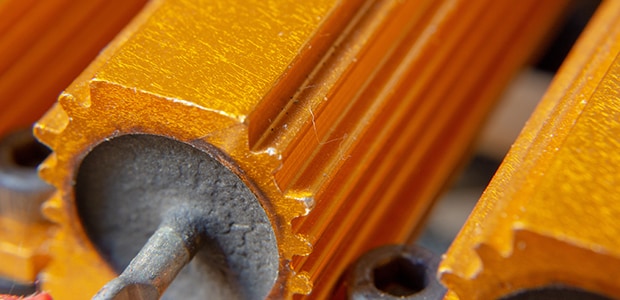
Product Insight
Uses of Resistors
Resistors are used so extensively in electronics that these are possibly the most underrated components.
Resistors are some of the simplest components in any electrical or electronic circuit. The most common use of a resistor is to restrict the flow of electrical energy through a circuit, but these can be used in a wide range of other tasks. These can be used as a safety device to dissipate a sudden inrush of power, or as an energy management device. These can be designed to respond to environmental conditions to control temperature or voltage, or these can be used to fine tune a delicate electronic device. Whatever the application, resistors represent the unsung heroes of the electronics world.
Understanding the right choice for your application: Fixed resistors
The fixed resistor is a vital component for electronic designers. Every sector, from consumer goods to heavy industry, relies on fixed resistors for a huge variety of tasks. Fixed resistors are designed so their performance does not vary, whether intentionally or in reaction to the environment. Fixed resistors can be further divided into categories based on their construction or mounting style. Our portfolio of fixed resistors includes through-hole resistors, surface mount resistors, and chassis mount resistors.
Through-Hole Resistors
This resistor is used on a printed circuit board (PCB). It is mounted using a lead that passes through the PCB (hence the name “through-hole”). The lead is then soldered to create a mechanical and electrical joint. The most common construction of this type of resistor involves coating an insulating core with films of resistive materials - frequently carbon, metal, or metal oxide. Into this film a helix is cut to create a path, allowing the manufacturer to fix the resistance of the component. First introduced in the 1970s, this type of resistor is still hugely popular because it offers a cost-effective solution in a familiar and easy-to-use package.
Surface Mount Resistors
With the adoption of surface mounting techniques to manufacture PCBs, surface mount resistors were developed as an alternative to the through-hole resistor. These small rectangular devices are designed specifically for surface mounting. Construction of surface mount resistors commonly uses one of two techniques – thin film and thick film. Both are made by depositing a layer of resistive material onto an insulating substrate. However, the techniques are subtly different. Thick film resistors are more suitable for applications that involve higher power, as the greater mass of the resistor is better able to dissipate the heat generated. Greater precision can be achieved in the thin film process, making thin film SMD resistors better suited for applications that require precision and stability.
Wirewound Resistors
In any application that involves high energy, the wirewound resistor is the primary choice. The construction is given away by the name – resistive wire is wound around a large core, often made of ceramic, giving the wirewound resistor a high mass, which is crucial when handling large amounts of energy. Wirewound resistors are frequently large and are for mounting onto frames or chassis to provide additional heat dissipation. Our portfolio also inlcudes chassis mount resistors.

Understanding the right choice for your application: Variable resistors
Variable resistors do not have fixed resistance values, but rather change their resistance according to manual input or in response to the environment. Therefore, variable resistors can be used to control the current or voltage of a circuit, making them highly useful in a wide range of industries and applications. Our portfolio of variable resistors includes potentiometers, trimmer potentiometers, and thermistors.
Potentiometers and Trimmer Potentiometers
Some resistors are designed to enable manual alterations of electrical circuits. The potentiometer is a familiar device and is found behind rotary volume controls and dimmer switches. The rotary action varies the resistance, allowing the user to alter the amount of power flowing through the circuit.
Trimmers (also called trim pots) are a related product that are designed to be used in conjunction with fixed resistors. The slight variability in the accuracy of fixed resistors means that sometimes a means of fine tuning the circuit is necessary in order to obtain the correct results. The trimmer is a device, often mounted on the PCB, that allows this precise alteration of the resistance.
Sensing Variable Resistors, including Thermistors
There are a number of resistor types that vary their performance according to the environment. One of the most common is the thermistor, which varies its resistance in response to its temperature. TE thermistors are of the negative temperature coefficient (NTC) type – the higher the temperature, the lower the resistance. This makes the thermistor for applications that require a change in electrical power in response to a change in temperature.
Choosing the right resistor is crucial for an optimal design. Our resistors can help you solve your design requirements. Our portfolio includes resistor solutions for precision and high-power as well as variable resistors to fine tune your circuit or help detect environmental conditions. Find the solution you need – start shopping from our portfolio of resistors.
 e
e
 e
e
 e
e

